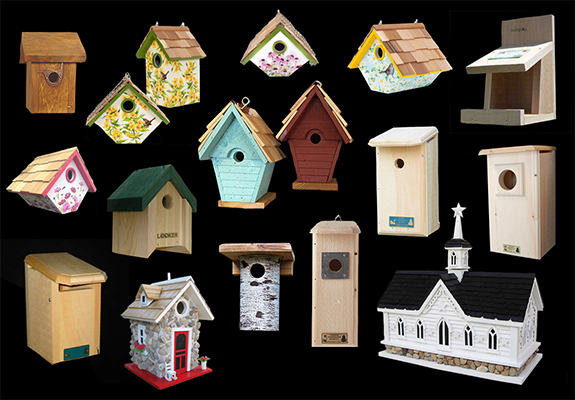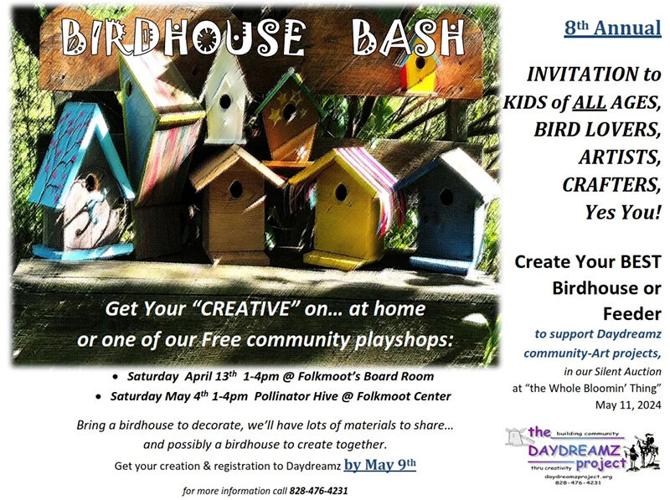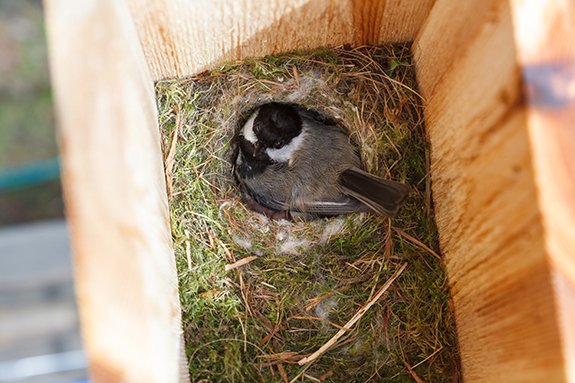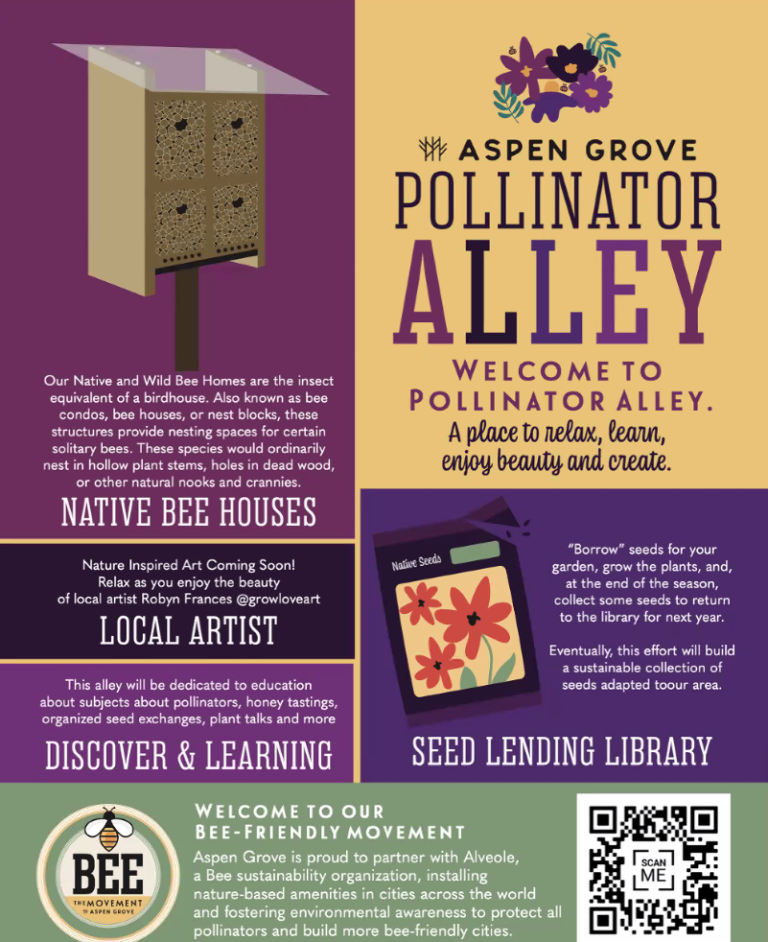Gardens buzz and flutter with life when pollinators visit. Birdhouses can play a crucial role in this.
Welcoming a rainbow of birds to your backyard isn’t just about beauty and bird songs. It’s also about supporting the local ecosystem. Birds are vital pollinators, and their cozy homes can make a big difference. Think about your garden. You want it full of life, right?
Birds help with that, moving pollen from plant to plant. But where should you put their houses? Get it right, and you’ll see flowers bloom and food grow. Your garden will be a hotspot for these feathery friends. A well-placed birdhouse not only offers shelter but also invites birds to stay, pollinate, and control pests. It’s simple, really. Give birds a place to rest their wings, and they’ll help your garden thrive. So let’s figure out the best spots for birdhouses to boost pollinator support.

Attracting Pollinators With Birdhouses
Placing birdhouses in your garden can do more than just provide a cozy home for feathered friends. It also plays a vital role in supporting pollinators. Birds like hummingbirds and other species are key players in the process of pollination. To attract these beneficial visitors, it’s important to understand the features of birdhouses that cater to their needs.
Essential Features For Pollinator-friendly Birdhouses
A well-designed birdhouse can be a haven for pollinators. Here are key features:
- Proper Ventilation: Ensure air flows freely to keep the interior comfortable.
- Clean Out Access: A door or panel that opens makes cleaning easy.
- Safe Materials: Use natural, non-toxic woods and paints for safety.
- Correct Hole Size: Match the entrance to the size of the target bird species.
- Shade and Shelter: Place birdhouses where they get some shade during the day.
Bird Species That Contribute To Pollination
Certain birds are more than just pretty to look at; they’re pollinators too. Here’s a list:
| Bird Species | Role in Pollination |
|---|---|
| Hummingbirds | Nectar feeders that pollinate flowers |
| Sunbirds | Similar to hummingbirds in habits |
| Honeyeaters | Feed on nectar and help in pollination |
By focusing on these birds, your garden can flourish and support the environment.
Ideal Placement For Birdhouses
Creating a sanctuary for pollinators starts with the ideal placement of birdhouses. Placing birdhouses correctly can boost pollinator visits. This guide reveals the best spots for your birdhouses to support these vital creatures.
Height Considerations For Pollinator Birds
The right height makes a birdhouse welcoming. Keep these points in mind:
- Optimal height for most species is between 5 to 10 feet off the ground.
- Place away from predator reach.
- Ensure birdhouses are visible to birds in flight.
Direction And Sun Exposure
Direction and sunlight affect birdhouse attractiveness. Consider these tips:
- Face birdhouses north or east to avoid strong sun and winds.
- Ensure there’s shade during the hottest part of the day.
- Avoid places that get too hot or too cold.
By following these guidelines, you’ll provide a safe haven for pollinator birds and contribute to a thriving ecosystem in your own backyard.
Landscape And Habitat Preferences
Choosing the right spot for birdhouses helps birds and pollinators thrive. Let’s explore how to create a welcoming landscape for them.
Native Plants That Attract Pollinators
Native plants are key. They provide food for birds and homes for insects. Here are some top picks:
- Sunflowers – bring in bees and birds.
- Purple Coneflowers – attract butterflies and small birds.
- Lavender – loved by bees for its nectar.
Plant these in sunny spots. They need 6 hours of sunlight daily.
Water Sources And Shelter
Birds need water and places to hide. Here’s how to help:
- Add a bird bath – for drinking and bathing.
- Build shelters – like bushes or small trees.
Place bird baths near the birdhouse but not too close. This keeps nests safe.
| Feature | Benefit |
|---|---|
| Native Plants | Attract more pollinators |
| Water Source | Keeps birds hydrated |
| Shelter | Provides safety |
Remember, a diverse garden supports more wildlife. Mix plants, water, and shelter for best results.
Timing Matters: When To Install Birdhouses
Getting the timing right is crucial for aiding pollinators. Birdhouses need to go up before the birds start looking for a place to nest. Let’s explore the best times for birdhouse installation.
Seasonal Patterns Of Pollinators
Pollinators follow set patterns yearly. Birds, bees, and butterflies all have preferred times for activity. For instance, many birds start nesting in early spring. To help them, put up birdhouses in late winter. This gives them time to find and settle in before breeding starts. Bees and butterflies also become active in spring. Plant pollinator-friendly flowers then to attract them to your garden.
Breeding Season For Bird Pollinators
Birds breed at specific times. Some, like bluebirds, begin in March. Others, like swallows, may wait until late spring. Learn which birds are local to your area. Then, install birdhouses one month before their breeding season starts. This helps ensure birds find a safe place to raise their young. And when birds thrive, so do the plants they pollinate.
Maintaining Birdhouses For Pollinators
Birdhouses play a crucial role in garden ecosystems. They support pollinators by providing shelter. To ensure these homes are safe and inviting, regular maintenance is key. Here’s how to keep birdhouses in top condition for our winged friends.
Cleaning And Repairing
After nesting season, a clean birdhouse is vital. It prevents disease and pests. Follow these steps:
- Remove old nests.
- Clean with a diluted bleach solution.
- Rinse well and dry.
- Check for damage and repair as needed.
Protecting From Predators And Pests
Safety is a must for birdhouse dwellers. Ensure protection with these tips:
- Install predator guards on poles.
- Choose designs that deter squirrels and cats.
- Inspect regularly for insect infestations.
- Use natural repellents to keep pests away.

Community Impact: Grouping Birdhouses
Grouping birdhouses can greatly benefit local wildlife and plants. It encourages more birds to visit, live, and pollinate in the area. This section focuses on how to group birdhouses effectively. It also looks at the positive effects on the community.
Cluster Placement Strategies
Placing birdhouses together is a smart move. Here are some tips:
- Keep them apart – Space them at least 5 feet apart. This prevents overcrowding.
- Vary heights – Different birds like different levels. Mix it up.
- Safe from predators – Place them high and in open spaces. This keeps birds safe.
- Face them correctly – North or East facing is best. It protects from direct sun and rain.
Fostering A Pollinator-friendly Community
Grouping birdhouses does more than help birds. It helps the whole area. Birds carry pollen from one flower to another. This helps plants grow, breed, and produce food. Here’s how to make a community more welcoming to pollinators:
- Use native plants – They are best for local birds and insects.
- Add water sources – A simple birdbath or fountain can attract more birds.
- Avoid chemicals – Pesticides can harm birds and pollinators. Use natural options instead.
By following these strategies, everyone can make a big difference. Not just for birds, but for the entire ecosystem.
Monitoring And Data Collection
Monitoring and Data Collection are key for birdhouse success and pollinator support. By tracking visits and contributing to science, you can help pollinators thrive. Let’s dive into how to monitor these helpful visitors effectively.
Tracking Pollinator Visits
Knowing which pollinators visit your birdhouses is crucial. It helps you understand their patterns and needs. To track visits:
- Place a notebook or digital recorder near your birdhouse.
- Record the date, time, and type of visitors you see.
- Notice which birdhouse designs attract more pollinators.
Use this data to adjust placements and types of birdhouses for better results.
Contributing To Citizen Science
Your observations can support global efforts. Share your data with citizen science projects. Here’s how:
- Find a project that matches your interest.
- Submit your pollinator visit data online.
- Connect with a community of like-minded individuals.
This collective effort helps protect pollinator populations. Plus, you get to be part of something bigger.
Educational Opportunities
Educational opportunities abound when placing birdhouses for pollinators. Engaging the community through learning can boost conservation efforts. Schools, local organizations, and nature enthusiasts can all benefit from understanding how birdhouses support our vital pollinators. Let’s explore how education can play a role in this important initiative.
Workshops And Signage
Hosting workshops educates the community on birdhouse placement. These sessions can cover topics such as:
- Choosing the right birdhouse
- Best locations for pollinator support
- Maintenance of birdhouses
Clear signage near birdhouses serves as an educational tool. Signs can provide information on:
- The species of pollinators in the area
- The importance of pollinators
- How birdhouses help the ecosystem
Involving Schools And Local Organizations
Schools can incorporate birdhouse projects into their curriculum. This hands-on approach teaches students about ecology. Projects can include:
- Building birdhouses in shop class
- Studying the impact of pollinators in science class
- Observing birdhouse activity for art projects
Local organizations can partner with schools for broader reach. Together, they can organize:
- Community planting days
- Birdhouse building competitions
- Guided nature walks focusing on pollinators

Frequently Asked Questions
How High Should Birdhouses Be Placed?
Birdhouses should be placed at a height of 5 to 10 feet above the ground. This range helps protect nesting birds from ground predators and gives them a good vantage point. Ensure they’re secure and in a quiet area to encourage habitation.
What Direction Should Birdhouses Face?
Ideally, birdhouses should face north or east. This orientation protects the entrance from direct sunlight and prevailing winds, creating a safer and more comfortable environment for the birds. It also helps in maintaining a cooler temperature inside during hot weather.
Can Birdhouses Be Close To Each Other?
Birdhouses can be close to each other, but specific distances depend on the bird species. Generally, small songbirds require 20 to 30 feet between houses, while larger birds might need up to 100 feet. Observing species-specific spacing helps reduce competition and ensures a harmonious habitat.
What Materials Are Best For Birdhouses?
Birdhouses should be made from natural, untreated wood like cedar, pine, or redwood. These materials are durable, breathable, and provide good insulation against heat and cold. Avoid using metal or plastic, as they can overheat or not provide adequate ventilation.
Conclusion
Choosing the right spot for birdhouses encourages pollinators to visit. Place them near flowers and plants they love. Make sure the area is safe from predators. A quiet spot works best. Keep birdhouses clean and well-maintained. Your garden will buzz with life.
Enjoy watching nature’s little helpers at work. They’ll thank you by keeping your plants healthy. Remember, every small step helps our environment. Let’s make our gardens a haven for these vital creatures. Your efforts count.


